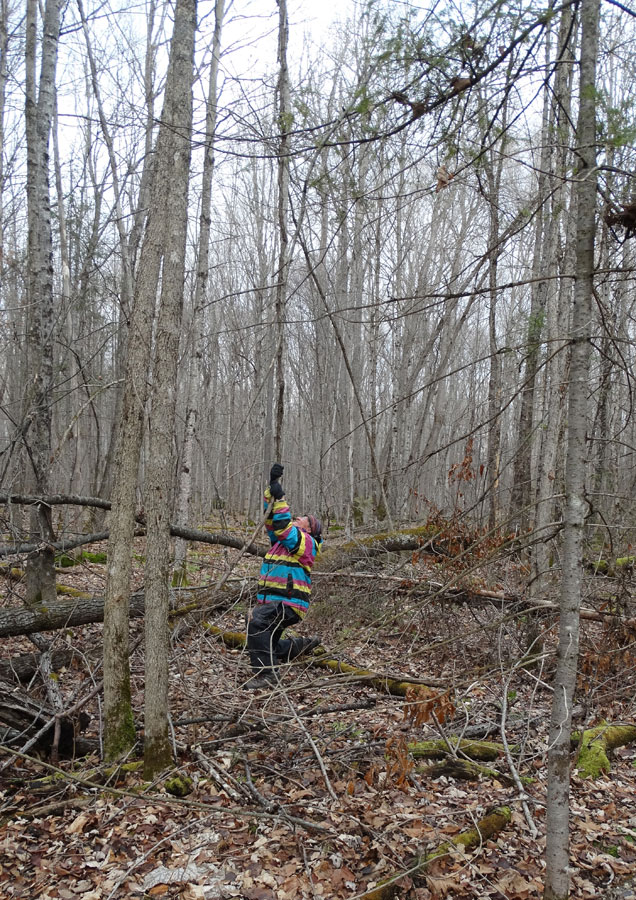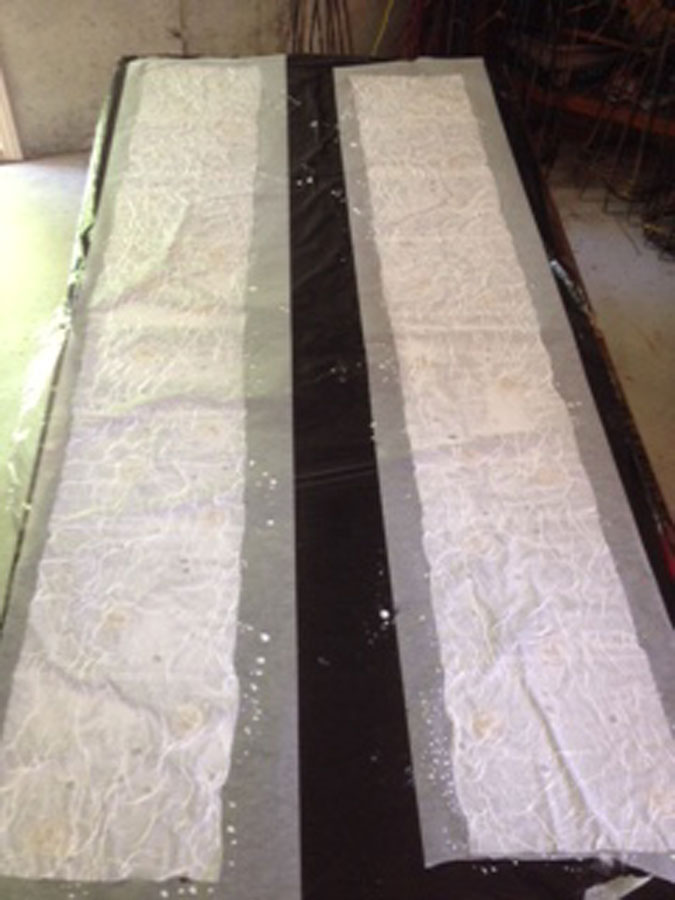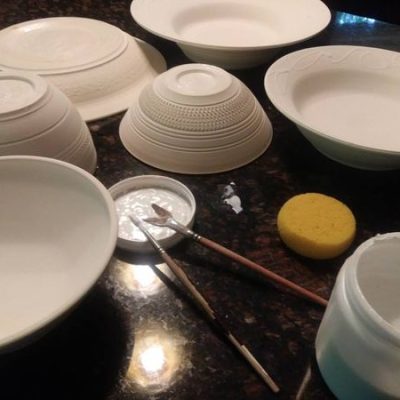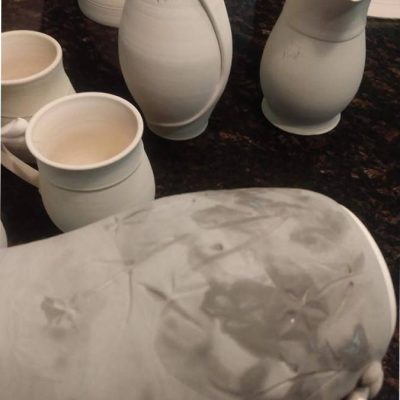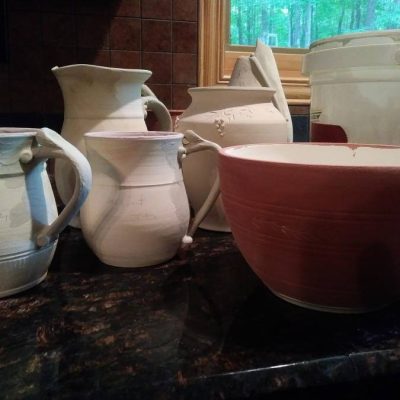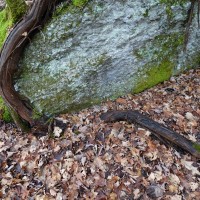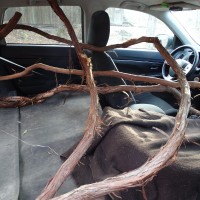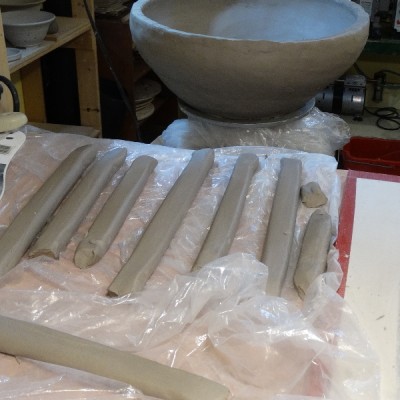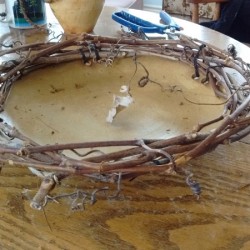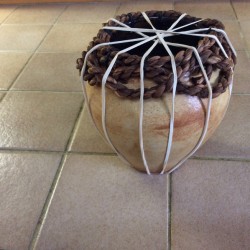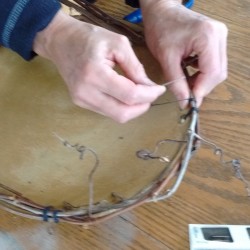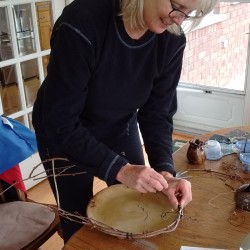Gathering vines is a necessary event that needs to happen every year if I want to continue to make baskets and wall weavings. Vines form the basic frames for my wall weavings and baskets. Gathering vines is the first step to begin a new winter season of creating fun and unusual frames.
I wait until early winter to gather vines as they are much easier to find after the leaves have fallen, but before the snow flies. Pulling a vine out of a tree is not as easy as one would guess. It involves a lot of time walking in the woods, working outdoors in the cold, and strength. Having access to an ATV winch is very helpful in terms of strength, but sadly most vines are accessible on foot only.
While walking in the woods, I look for a suitable vine and approach it while noticing how it is growing up the tree. If it is quite tangled in the host tree, it will be more difficult to get out. When I locate a potential vine, I reach up as far as possible and start pulling. Sounds simple. But the vine doesn’t always cooperate. I usually have to try pulling from different angles, on several different vines, before I find one that will finally release its hold and allow me to pull it out of the tree.
Once on the ground, I use loppers to cut the base of the vine and hand clippers to trim the small offshoots I don’t want.
Now to get the vine home. It’s very difficult to get a 30- or 40-foot length vine out of the bush by just dragging it. It catches on every little thing, not to mention the possibility of dragging it through mud or old poison ivy. I contain the vine as best as possible by loosely coiling it into a giant wreath shape so I can carry it back to my car over my shoulder. If I can’t stuff the vine in the back of my car, I simply attach the giant wreath to my roof racks and off I go.

